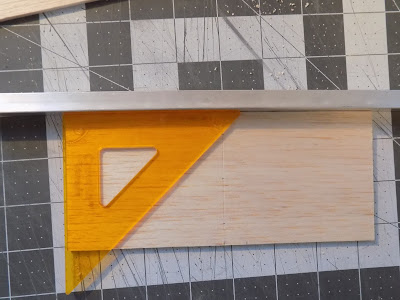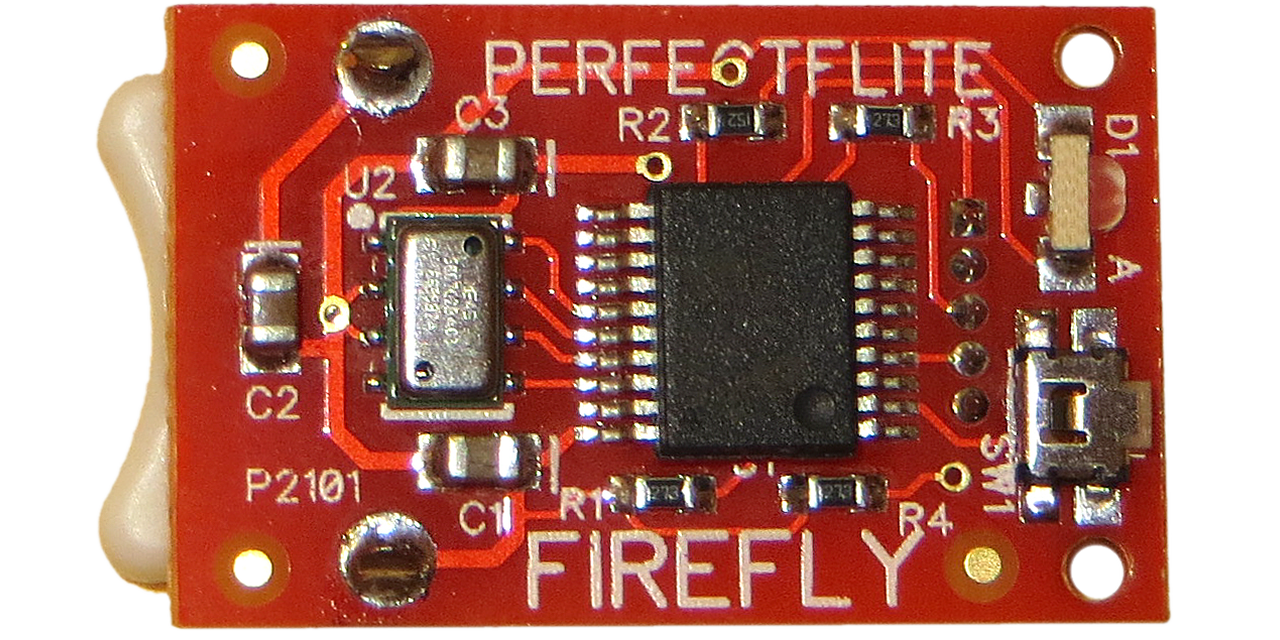Recently, on The Rocketry Show Podcast Facebook discussion group, someone asked about a photo. CG, one of the hosts of the show, was presenting at NARCON 2016, and needed pictures of me and of Gheem, the other host, recording the podcast. CG posted our pictures on the discussion group.
Someone in the group asked, "In your pic showing you in your rocketry den, there is an apparatus that holds rockets horizontally and looks like it is made with PVC tubing. Where can I buy one of those?"
That object is a rocket cradle, and you don't buy them. You make them.
A rocket cradle holds a rocket on its side while you work on it, and keeps the rocket from resting on its fins on your work table. It can be very useful for when you're making fin fillets or applying decals, or even in the field when you're prepping larger rockets for flight. It's one of the easiest and cheapest pieces of equipment to make.
Rocket cradles are even used in real rocketry, during construction, storage and transportation of rockets. Here are two images of the Iris sounding rocket in cradles.
I'm going to show you how to make three versions of the rocket cradle.
Version 1 - For Small Model Rockets
This simple rocket cradle is described in The Handbook of Model Rocketry. It's made from balsa wood, but can also be made from basswood, cardboard, foam board or whatever you have on hand that's flat and can be easily glued together. Balsa is probably the easiest material to use, and if you build your own rockets, you should have some on hand anyway.
I used two pieces of 1/8 inch thick balsa stock, 3 inches wide. It's important that the ends be square, so if you're using scrap pieces with unevenly-cut ends, you'll want to square them up. One piece will serve as the base of the cradle, and the other will be the upright supports on the ends.
I drew a dividing line down the center of the shorter piece I'd use as the upright supports. The upright support board is 7 inches long, which will give me two 3 1/2 inch tall uprights.
I found the center of that dividing line, then marked spots 1 inch from either side of that center. This would give me a cradle with a 2 inch wide span.
I then marked the board so I'd have lines stretching from the outer marks on the support center line to the center of the board, at a 45 degree angle. You can use a compass to do this, but I found it easiest to use the drafting triangle from a Crayola drafting toy I had as a kid. I always figured I'd have a use for that thing if I saved it, and it has come in handy since I started building rockets.
You will end up with a square in the center of the board.
With a hobby knife, carefully cut the centering line, so you have two even pieces. As with cutting all balsa, use a new, sharp hobby knife blade, and don't try to cut in one pass - use several, light strokes to cut the wood.
You can lightly sand the cut ends so they're square if you need to. This balsa was very soft, so I got a jagged cut.
The square has now become two triangles, hard to see in the above photo, but on the right side of the upright support pieces.
Carefully cut the two triangles out with a hobby knife and a metal ruler.
You can stack the two triangles together and sand the edges even, just as you would do with a set of fins when building a rocket. These will become support struts for the uprights.
You'll be gluing the uprights onto the ends of the base board, and gluing the support struts to both pieces. I found the easiest way to do this was to glue the support struts onto the upright pieces first.
You want to glue them flush with the bottom of the upright boards, and as straight as you can. Drawing a centering line from the bottom of the cut-out triangles on the uprights helps to align them.
A piece of aluminum angle will help you get the support struts glued on straight and even with the bottom of the upright boards.
When gluing on the struts, a double glue joint will make building easier. Apply a thin layer of wood glue to one edge of the support strut, attach it to the upright board where you want it, and then remove the support strut. Allow the glue to dry for a few minutes.
Once the glue has dried a little, apply a little more wood glue to the same edge of the support strut. Again, you want a thin layer. Then, using your guide line and aluminum angle, attach it to the upright board.
The double glue joint will grab much more quickly, and you won't have to stand there holding the piece in place as it dries. It will take only a moment of your holding it in place for it to stand up on its own.
Repeat this for the second upright and support strut.
Let the glue dry for a little while, and once it's relatively set, apply fillets to the joints, just as you would do with fins on a rocket. This will strengthen the joint, so the uprights don't fall apart when you glue them to the base.
After the glue has dried for a little while - 30 minutes to an hour - you can glue the uprights to the base. The glue doesn't have to be completely dry on the struts, as long as you're careful not to break them off.
Apply a thin layer of wood glue to the bottom edges of the uprights and the struts, and make another double glue joint. Again, a piece of aluminum angle or other square object will help you get the uprights on straight and even with the edges of the base board.
The rocket cradle is complete. Allow it to dry thoroughly.
Note: I probably made the base of this cradle a little too long. I built it just for this blog post. It's a 9-inch long board. This cradle is good for smaller rockets, and probably shouldn't be longer than 6 or 7 inches. See below photo.
 |
| The Estes Viking is too short to be supported by the body tube. |
Version 2 - For Medium to Large Rockets
This is the cradle seen in the background of the Rocketry Show picture. It's made of PVC, and is pretty versatile. It can hold medium and larger rockets, and you can add to it or change its configuration to fit your needs.
You see a lot of PVC cradles in online forums and at club launches. PVC is relatively cheap, useful for a number of rocketry accessories, and is pretty easy to work with. The tricky part is cutting it. You will need either some kind of saw or PVC pipe cutter.
I have cut PVC with a hack saw before, but it's hard to cut it straight. When I realized I'd probably end up building a number of things from PVC, I went ahead and got myself a pipe cutter which can handle PVC pipe up to about an inch and a half in diameter. It's a large, ratcheting clipper which looks a bit like an angry parrot. Whereas a hand saw leaves the edges of the PVC jagged, requiring you to sand the cut ends, the pipe cutter makes a clean, straight cut.
It cost me about $12 at a local hardware store.
The cradle in the above picture is actually two parts, which can be moved relative to one another, and which don't take up much space when not in use. I'll show you how I made it, and some variations you may consider.
You will need the following PVC parts, available at a hardware store:
- A length of 1/2 inch diameter PVC - at least 20 inches (it's usually sold in 5-10 foot lengths)
- Two 1/2 inch PVC cross fixtures (non-threaded)
- Four 1/2 inch PVC t-fixtures (non-threaded)
You will also need one foam pool noodle, which you can usually buy for less than a dollar from spring through summer, and sometimes into the fall.
It is important that the PVC fixtures be non-threaded. Some fixtures have threads inside them, to enable you to screw parts together. We want to be able to simply slide the parts together.
The first step is to measure out eight 2 1/2 inch lengths of PVC pipe and cut them.
Assembly is simple. Start by making the cross pieces. Put one 2 1/2 inch length of PVC pipe into each opening in the PVC cross fixtures.
Attach T fixtures to the ends of two adjacent pipes on each cross piece, with the open ends of the T fixtures perpendicular to the cross piece.
The cross pieces should now be able to stand on their own.
With a hobby knife, cut four 2-inch lengths from the pool noodle.
The lengths of pool noodle should fit right over the ends of the PVC pipe on the cross pieces.
Now you're basically done. You can move the two cradle pieces closer together or farther apart depending on the size of your rocket.
Now, these two parts will stand perfectly well on their own. But if you want to take this cradle out to a windy field, and need some more stability, you can add feet. Simply cut two lengths of PVC pipe for each T fixture foot, put them into the openings, and add a PVC end cap fixture. Now you have a sturdy pair of cradles which are still small and portable.
If you want something even sturdier, or you simply want something that's one piece, you can join the two cross pieces with lengths of PVC pipe. In that case, you can use the T fixtures, as seen above, or you can substitute elbow fixtures, as seen here below.
You could even add a third cross piece for really long or heavy rockets which need extra support. Simply use a T fixture to attach the middle cross piece to the longer pipe, and T's or elbows for the end cross pieces.
You'll find this cradle to be a very useful tool.
Version 3 - Fast, Cheap, and Easy
Serious rocketeers never throw anything away before considering whether they might be able to use it for rocketry first.
This box once held a 12-pack of ramen noodles.
Get yourself a small cardboard box. Find the mid point of two opposite sides of the box, and mark it with a pencil.. As with the balsa cradle, measure out an inch or so on either side of that mark. Then, as with the balsa cradle, draw two 45 degree lines inward from those outer marks until they connect.
Cut out the triangles you've created with scissors.
Finished!
Now you have not only a quick and easy rocket cradle, but a box to keep parts in while you're working on the rocket.
You can cut notches on the two far sides for longer rockets, and the two nearer sides for smaller ones. You can even cut multiple sets of notches, and have a cradle that can hold two or more rockets at a time.
It's very satisfying to make a useful tool yourself, especially so inexpensively. And once you start using a rocket cradle, you'll wonder what you did without one.
Like my Facebook page for blog updates and extra stuff.
Follow me on Twitter.




















































